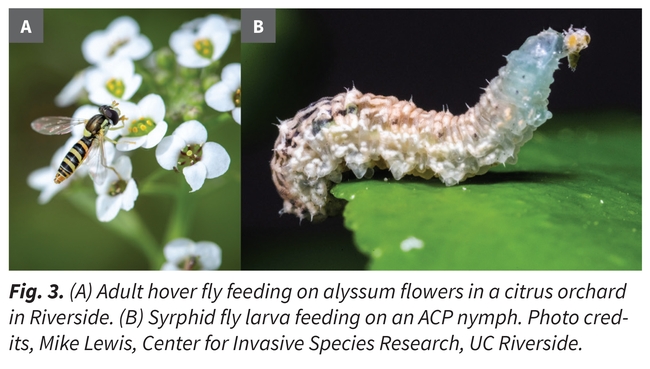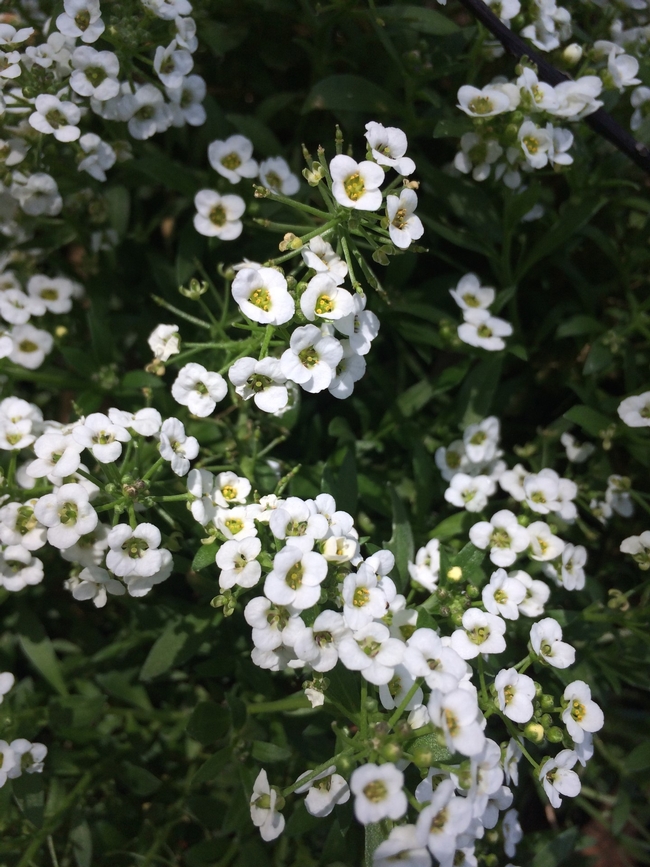Seasonal observations of the UCCE Master Gardeners
- Author: Jennifer DeDora
Published on: July 10, 2023
Companion planting is a well known practice to many gardeners. Companion planting is defined as planting two or more plants in proximity to each other so as each plant benefits from the presence of the other. By providing positives such as, support, shade, protection from each others pests, etc.
A few well known companion plantings are the “three sisters” corn, beans and squash and the pairing of tomatoes and basil. A lesser known and more current match up is the co-planting of Sweet Alyssum and citrus trees.
Lobularia marítima, Sweet Alyssum, is a low growing annual that has a pleasant scent and grows very well in Northern California. They are most often white in color, but can also be found in pink and purple. They reseed freely and are generally easy to grow. They are frequently visited by hover flies a.k.a Syrphid flies. This is where pairing sweet alyssum with citrus trees comes in!
A burgeoning citrus pest, Diaphorina citri, the Asian citrus psyllid is a common meal for the hover fly that is often found hovering around sweet alyssum. It's not the adults that are the adversaries, specifically the hover fly larvae feeds upon the Asian citrus psyllid nymphs. So pairing these two plants together is a great beneficial match to lower the abundance of the asian citrus psyllid which feeds upon the new shoots of all types of citrus trees.
Due to the fact that Asian citrus psyllid is the vector for the citrus crop destroying Huanglongbing disease and we want to slow it's spread, planting sweet alyssum near your citrus trees seems like a sweet smelling idea!

https://ucanr.edu/sites/scienceforcitrushealth/files/302873.jpg

Comments:
by Patricia
on July 11, 2023 at 4:07 PM
This is great information, especially since I didn't know that hover fly larvae eat the Asian Citrus Psyllid. Thanks!
by Melissa Sandoval
on July 30, 2023 at 1:05 PM
Jennifer, does any of youe information say how close the 2 plants need to be? I have both citrus and alyssum, just not co-planted. Thanks for the info.
Leave a Reply:



